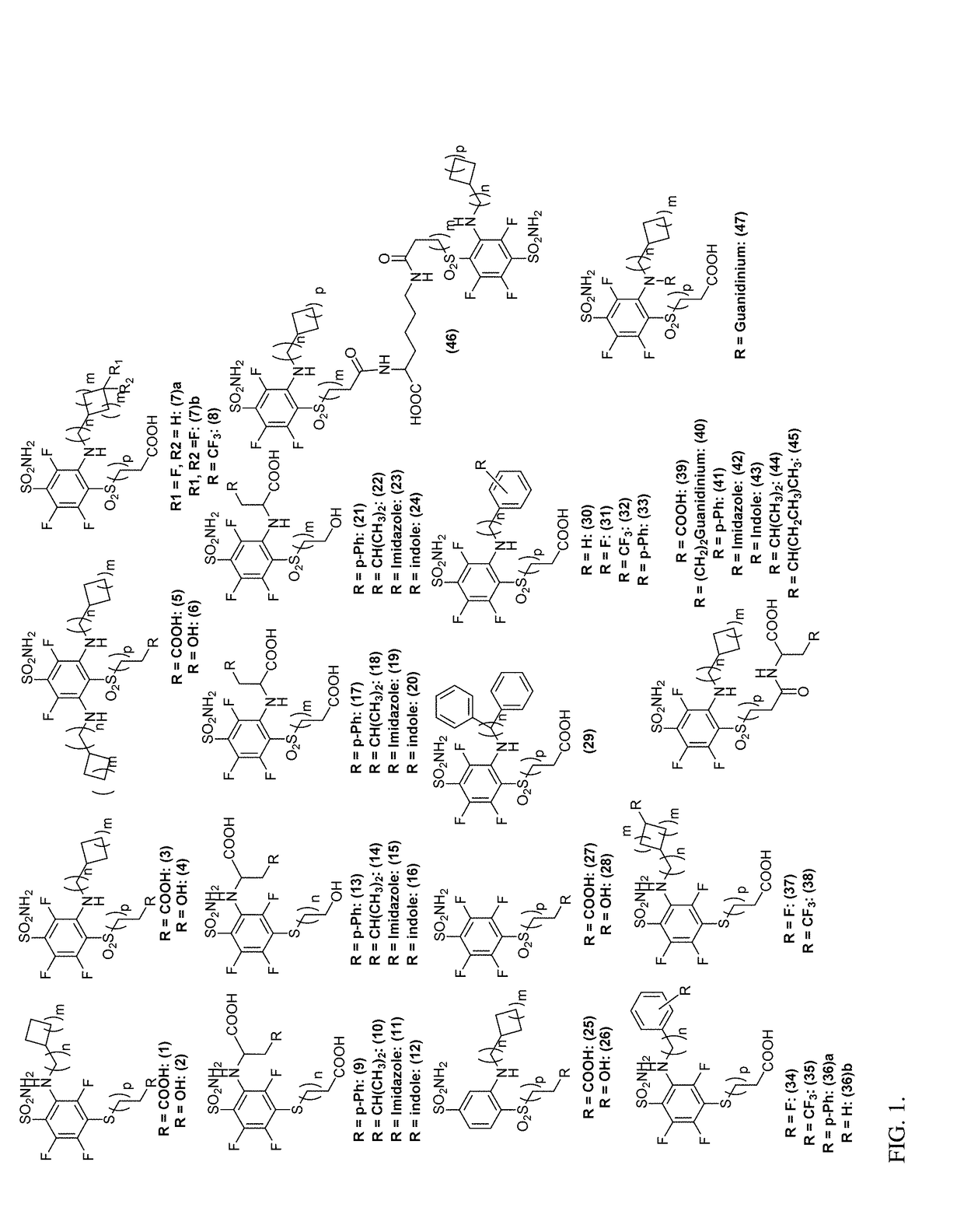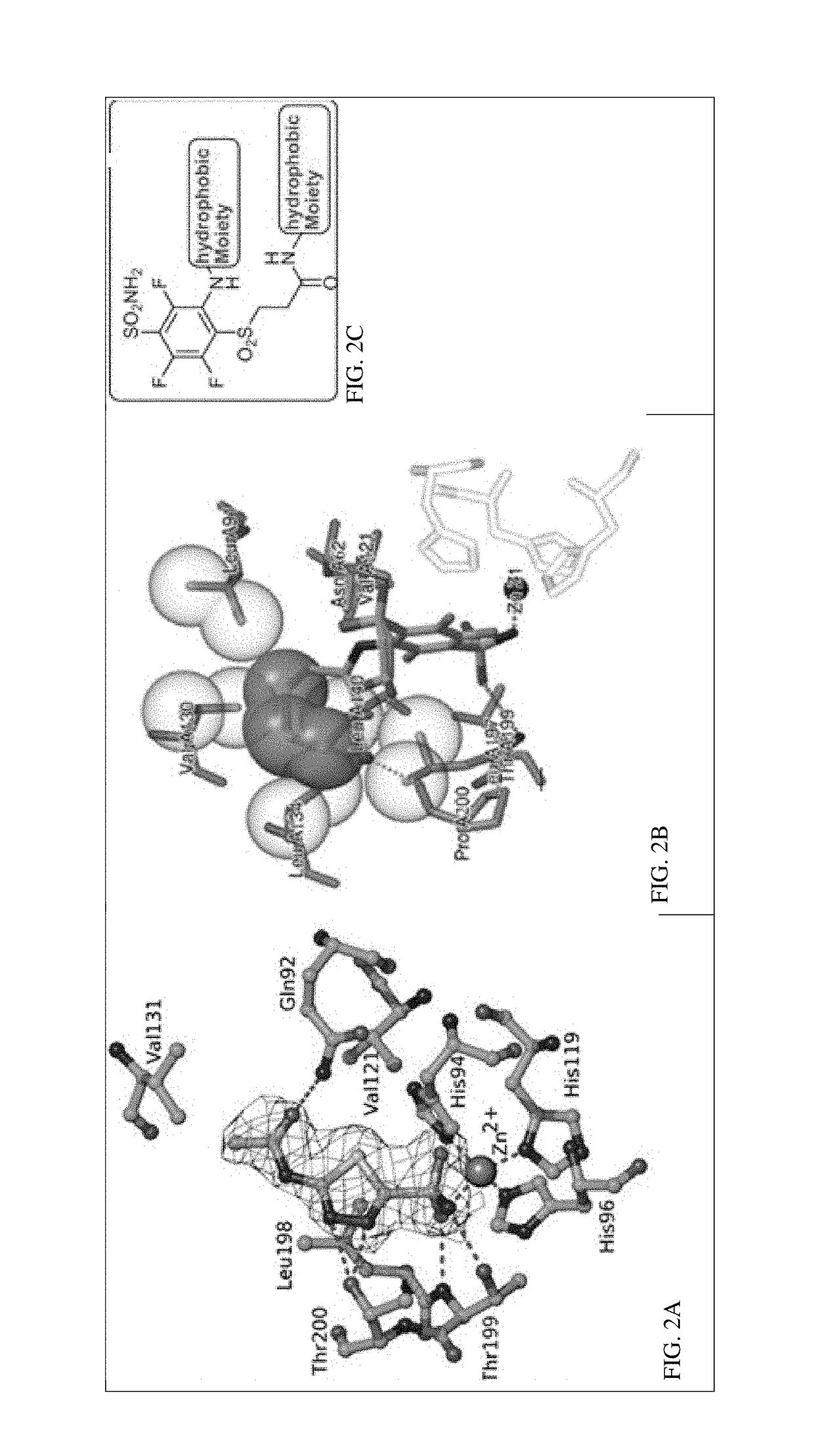Ca ix - nir dyes and their uses
a dye and nir technology, applied in the field of ca ix, can solve the problems of poor tumor hypoxia, poor tumor prognosis, and inability to achieve the effect of reducing tumor hypoxia, improving clinical properties, and fast tumor accumulation
- Summary
- Abstract
- Description
- Claims
- Application Information
AI Technical Summary
Benefits of technology
Problems solved by technology
Method used
Image
Examples
examples
Example: (1) Synthesis and Preclinical Evaluation of CA IX Ligands with Extended Binding Residue
[0364](FIG. 1-2)
[0365]Synthesis of Novel CA IX Ligands
Scheme 1 shows the Synthesis of 2,3,5,6-tetrafluoro-4-((2-hydroxyethyl) sulfonyl)benzenesulfonamide
[0366]To a pentafluorobenzenesulfonamide (2.0 g, 8.098 mmol, 1.0 equiv) in MeOH (81 mL) was added DIPEA (1.55 mL, 8.908 mmol, 1.1 equiv), followed by 2-mercaptoethan-1-ol (0.63 mL, 8.908 mmol, 1.1 equiv) under argon. The reaction mixture was refluxed for 16 h and reaction progress was monitored by thin layer chromatography. After completion of reaction, MeOH was evaporated using rotaevaporator and the resultant solid was filtered and washed with water and dried under lyophilization. The solid compound isolated (1.59 g, yield, 95%) was confirmed by LCMS and used for next step.
[0367]Oxidation of sulfide to sulfone: To the alcohol compound (1.50 g, 4.913 mmol, 1.0 equiv) in an MeOH: H2O (1:1, 50 mL) was added oxone (3.02 g, 9.826 mmol, 2.0 e...
PUM
 Login to View More
Login to View More Abstract
Description
Claims
Application Information
 Login to View More
Login to View More - R&D
- Intellectual Property
- Life Sciences
- Materials
- Tech Scout
- Unparalleled Data Quality
- Higher Quality Content
- 60% Fewer Hallucinations
Browse by: Latest US Patents, China's latest patents, Technical Efficacy Thesaurus, Application Domain, Technology Topic, Popular Technical Reports.
© 2025 PatSnap. All rights reserved.Legal|Privacy policy|Modern Slavery Act Transparency Statement|Sitemap|About US| Contact US: help@patsnap.com



